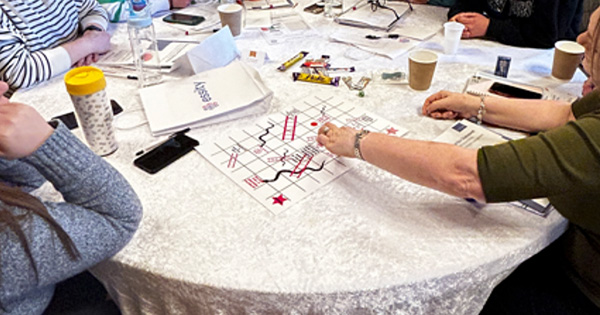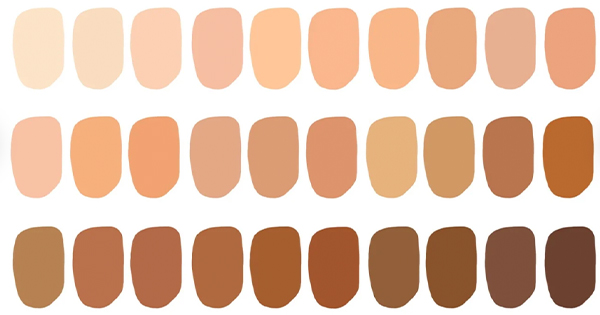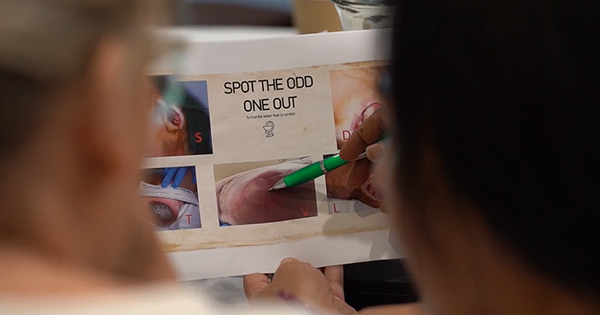Education and personal development are key components in nursing not only for mandatory revalidation with the Nursing and Midwifery Council, but to ensure that up-to-date, evidence-based care is being delivered in partnership with the people we professionally care for. Tissue viability is a specialty that is relevant for all the people we care for and relevant for all staff involved in any person’s care journey. Tissue viability is also a specialty that is constantly updating, changing and evolving, so the challenge is ensuring that tissue viability education is available and education programmes are up-to-date, relevant and meet the brief for the target audience.
In-person education came to an abrupt standstill during the COVID-19 pandemic in 2020 and out of necessity it was replaced with online resources and virtual meetings. However, feedback from 199 nurses via an online poll revealed that for 72% (n=143) respondents, in person sessions was the preference for tissue viability education to be delivered. Therefore the tissue viability team in NHS Greater Glasgow and Clyde set out to re-establish in person education for their nursing colleagues, but they wanted the sessions to be educational but fun at the same time. So, the tissue viability nurses decided to introduce the concept of playing games to deliver the educational message.
There is supporting evidence of the benefits from learning through play and fun, including (Lucardie, 2014; Tews et al, 2015, 2017; Yahya, 2019):
- Enhances critical thinking skills.
- Conducive conditions.
- Competition – think quickly and use logic.
- Engagement – improves memory.
- Immediate rewards – keep students invested, stimulating them.
- Improved – hand- eye coordination.
- Builds confidence and motivation.
- Increased student participation.
- Motivate students to take risks.
- Achieving goals.
Testing the concept
An opportunity arose when the tissue viability nurses were invited to deliver education to undergraduate nursing students during tissue a 2.5-hour tissue viability session at the University of Glasgow. For the entire session, the students played “wound care bingo” to cover a wide range of tissue viability topics. The session was well received with students reporting “best education session I have ever had” and “so much fun and learned lots”.
Wound care bingo
All you will need to play this popular social game is a book of bingo cards and a set of questions where the answer is a number. You distribute the bingo cards to the audience and you ask the questions and provide the answers. If the participant has the number on their card they mark it off, the winner is the person who has marked off all the numbers on the card – BINGO! A sample of questions are:
- How many categories or grades of pressure damage is there? 6
- What degree of tilt would you place a person in to allow reperfusion of skin from pressure? 30 degrees
- What does the treatment of a category 2 pressure ulcer cost in thousands of pounds? £8,000
- How many hundred thousand people are affected by a pressure ulcer in the UK? 7 (700,000)
- How many layers of the skin are there? 3
- How many days does it take for a category 2 pressure ulcer take to resolve? 23 days
- What percentage of non-wound specialists get pressure ulcer grading incorrect? 60
- What is prevalence of pressure damage in people with spinal injury? Up to 30%
- How many days extra do patients spend in hospital with a pressure ulcer? 10
With the success of the testing the concept, the Glasgow tissue viability nurses decided to apply this to future format of education events.
NHS Greater Glasgow and Clyde in-person tissue viability education events
In addition to a suite of on-site educational events, the tissue viability team in Glasgow work in partnership with industry to host up to six off-site, all-day events for up to 180 delegates at a time. The venue is set up in round table style to facilitate discussion and make playing games easier.
Topics covered at these educational days include:
- Ice breaker.
- General wound care knowledge.
- General wound management knowledge.
- Pressure ulcer grading.
- Pressure ulcer prevention.
- Navigating the pressure ulcer Care Assurance and Improvement Resource (CAIR) dashboard (provides data on the quality of care provided by nursing and midwifery staff in Scotland; this information is used by nurses, midwives and senior management to monitor and improve quality of care).
- Wound assessment.
- Anti-microbial stewardship.
In addition to standard presentations, a suite of games are used to inject fun and make the environment conducive to learning.
Games utilised
- Bingo.
- Interactive quiz utilising interactive app.
- Pressure ulcer prevention Beetle Drive.
- Dashboard treasure hunt.
- Wound assessment using models.
- Human treasure hunt.
- Wound care-specific snakes and ladders.
Below are instructions for playing the interactive quiz, Snakes and Ladders and pressure ulcer Beetle Drive – all of these can be adapted for any wound care topic.
Snakes and ladders
All you will need to play this well-known childhood game of snakes and ladders is dice [Figures 1 and 2]. There are numerous templates online that you can populate with your own ‘snake’ and ‘ladder’ criteria. It can be used for a range of other topics too, for example, wound assessment and management of infected wounds. This example is focused on pressure ulcer prevention.
Pressure ulcer Beetle Drive
This game is based on the game of Beetle Drive where each number on the dice represents a body part of the beetle. The aim of the game is to build a beetle. In this game, it is pressure ulcer prevention by achieving all elements required to prevent pressure damage. This emphasises the ‘bundle ‘ approach, where every element must be present to deliver safe care (you need all of the body parts for the beetle).
To achieve this, you must throw a lettered dice and cross off each section as shown when the dice lands. These lettered dice are very easy and inexpensive to make.
You can make up your own codes. The winner is the person who has crossed off all the boxes in the pre-printed template.
Each of the boxes represents an element of pressure ulcer prevention.
The tissue viability nurses in NHS Greater Glasgow and Clyde review every healthcare-acquired pressure ulcer and assess if this was avoidable or not. Codes are allocated for the reasons the pressure ulcer was assessed as being avoidable: C, D, E, L, M and R. These letters represent a part of that person’s care that was not to the required standard to prevent pressure damage occurring [Figure 3].
You must roll: 6 × C, 5 × E, 4 × M, 3 × D, 2 × L, 1 × R.
C = Care rounding: Needs checked by RN every shift. 2 hourly if red skin. Check patient not on same area for longer than prescribed. Complete variance and only use designated codes.
E = Equipment: Ensure all equipment is used timely and correctly including the knee bend in the bed.
M = Management: React to red can we change to discoloured please skin and protect from further harm by repositioning 2 hourly, use equipment and perfuse the area.
D = Documentation: RN to ensure all completed at each shift before writing ‘care as planned’ or ‘care as per care rounding’
L = Leaflet: All patients at risk must be issued with a leaflet or verbal advice given this must be documented. If prevention advice not given the reason why must be documented.
R = Referral: Timely referral to appropriate specialist for advice on prevention and management.
Interactive quiz
There are numerous interactive quiz apps available where participants download a QR code to participate in a topic specific quiz. You set the questions and the participants answer the questions using their mobile phone. The answers and results are displayed in real time. Warning – this can get really noisy and highly competitive! The most commonly used quiz interactive platform was Kahoot. Kahoot is an online game-based learning platform that makes it easy to create, share and play learning games or trivia quizzes in minutes.
Summary
Formal feedback is obtained from delegates at each of the study days, the results are consistently achieving between 95 and 100% satisfaction in terms of content, delivery and the appropriateness of playing games and the free text comments follow the same themes





